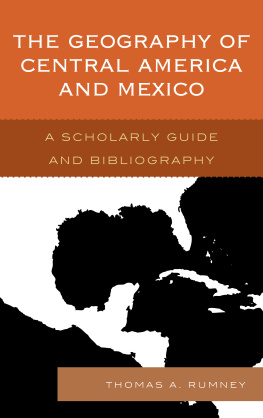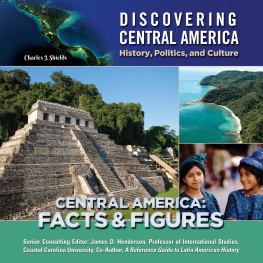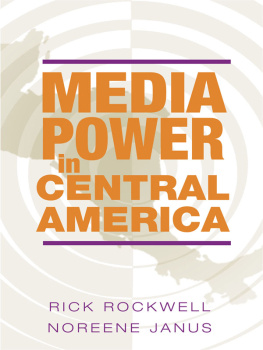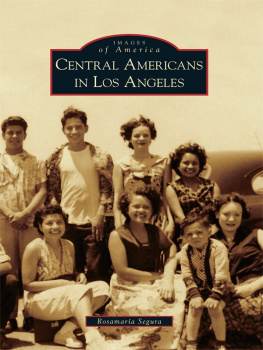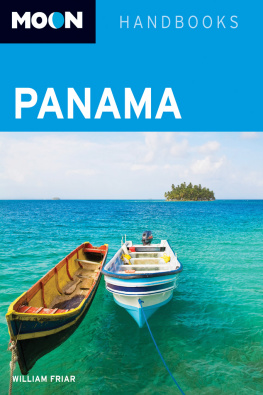BY THE SAME AUTHOR
The Religious Roots of Rebellion:
Christians in Central American Revolutions
Copyright 1985 by Phillip Berryman
All rights reserved under International and Pan-American Copyright Conventions. Published in the United States by Pantheon Books, a division of Random House, Inc., New York, and simultaneously in Canada by Random House of Canada Limited, Toronto.
Library of Congress Cataloging in Publication Data
Berryman, Phillip.
Inside Central America.
1. Central AmericaPolitics and government1979 2. RevolutionsCentral America. 3. Central AmericaForeign relationsUnited States. 4. United StatesForeign relationsCentral America.
I. Title.
F1439.5.B47 1985 327.730728 84-43002
eISBN: 978-0-307-83163-7
v3.1
CONTENTS
INTRODUCTION
Central America has not always been a fixture in the U.S. media. Between 1972 and 1977, less than 0.1 percent of television network news coverage was devoted to this region that President Reagan would later claim stood at our doorstep. During four of those years, no story on El Salvador appeared on any network any night of the year.
By the end of the decade, things had changed radically. In July 1979, the Somoza dictatorship in Nicaragua was overthrown and the Sandinistas set up the first revolutionary government in Latin America since the Cuban Revolution in 1959. The protest movements in El Salvador and Guatemala turned into open insurgencies during the next two years. Since then, Americans have become accustomed to seeing Central America as a trouble spot. During 1986, congressional debate over sending $100 million to the U.S.-sponsored contras attacking Nicaragua went on for months. The discovery that Reagan officials were sending the contras profits from arms-for-hostages deals with Iran has sent tremors through the entire administration.
A steady two-thirds of the public disapproves of the thrust of U.S. policy in Central America. Many people intuitively grasp that the Central American situation might develop into another Indochina-type war, and many are indignant over U.S. support for governments that kill their own civilians, or tolerate their murder. Yet others follow the Reagan administration line that revolution in Central America must be seen as part of a global superpower struggle. The result is a kind of stalemate: public opposition has thus far prevented the Reagan administration from a direct U.S. invasion of Nicaragua, but it has not been enough to push the United States to accept the negotiated approach advocated by the Contadora countries (Mexico, Venezuela, Colombia, and Panama).
If some North Americans fear another Vietnam, for Central Americans themselves the war has already been going on for almost a decade. Forty thousand Nicaraguans were killed in the 197879 insurrection, and an estimated 12,000 more have died in the contra war. Approximately 60,000 Salvadorans have been killed since 1980, and an estimated 50,000 to 75,000 Guatemalans have been killed since 1978. In all these cases, the vast number of victims were civilians. Between 1 and 2 million Salvadorans and Guatemalans have been uprooted from their homes and made refugees, many fleeing as far as the United States. The war and the world recession have set Central American economies back to 1970 levels or even worse.
This book is the outgrowth of my own experience in the region and my efforts to interpret it for Americans. From 1965 to 1973, I worked as a Catholic priest in Panama City barrios, and from 1976 to 1980 I lived in Guatemala City as the American Friends Service Committee (AFSC) representative in Central America. I experienced the step-by-step unfolding of the crisis in Central America long before it was recognized in the United States. After returning to the United States in 1980, I focused on Central America in research, writing, and public speaking.
Earlier versions of this work include those published by the AFSC in 1983 and 1984 under the title Whats Wrong in Central Americaand What to Do About It, and an expanded edition first published by Pantheon in 1985. My aim was to present an outline of the main issues and to provide both factual information and a basis for interpretation. A book as short as this one cannot begin to assemble all the relevant data on Central Americathe area includes five countries, each with its own history and characteristicsand U.S. policy there. It must necessarily condense, summarize, and select. What it can do is propose a framework for understanding the present Central American conflicts.
We are not able to view a situation like the one in Central America with unaided eyeswe are always perceiving it through one set of glasses or another. There are no pure facts to be isolated: our interpretations, our feelings, and our worldviews are already at work as we select what facts to consider. We can, however, realize that we are wearing such glasses, be critical about them, and even change them, if we choose.
The conventional frameworks for understanding the situation in Central America are either conservative or liberal. The conservative position seems clearer. Its starting point is an overall East-West confrontation, and basic policy in Central America is a matter of identifying enemies (the Sandinistas and the Salvadoran guerrillas) and friends (for example, the present governments of El Salvador, Honduras, and Guatemala, and the contras).
Liberals believe that the problem stems from the resistance of entrenched elites to legitimate pressure for change. The aim should be not to resist change but to channel it constructively, typically by finding the right group or candidate to take charge of the government. Repression and human rights violations are viewed as ultimately self-defeating.
Although they appear to be at opposite poles, these viewpoints converge much more than their proponents might desire. In practice, each adopts from the other. It was the liberal Carter administration that began preparing to send El Salvador military aid as early as mid-1979, and later sent the first military advisors. The conservative Reagan administration has adopted the rhetoric of human rights and land reform, and eventually dissociated itself publicly from some individuals notoriously linked to death squads. All congressional representatives, whatever their party or persuasion, today observe a strict taboo: no public praise for the revolutionary government in Nicaragua.
What I say in this book is by no means original. It simply articulates a consensus view of those whose approach to Central America is based on direct experience with Central Americans themselves (church workers, development workers, scholars) as well as almost all Western European and Latin American governments. It is not the consensus of those whose starting point is a map whose territories are divided into ours and theirs.
To the rest of the world, it is obvious that present U.S. policy in Central America is not about human rights, democracy, economic stability and growth. It is not about U.S. economic interests, since the United States has already spent far more in Central America than the total amount of American investment there. It is not even about U.S. security, since Nicaragua has about one-hundredth of the U.S. population and one-thousandth its economic power. The basic issue is U.S. hegemony over a region traditionally considered part of its sphere of influence. Both liberal and conservative rhetorics rationalize this assumed right to hegemony.




